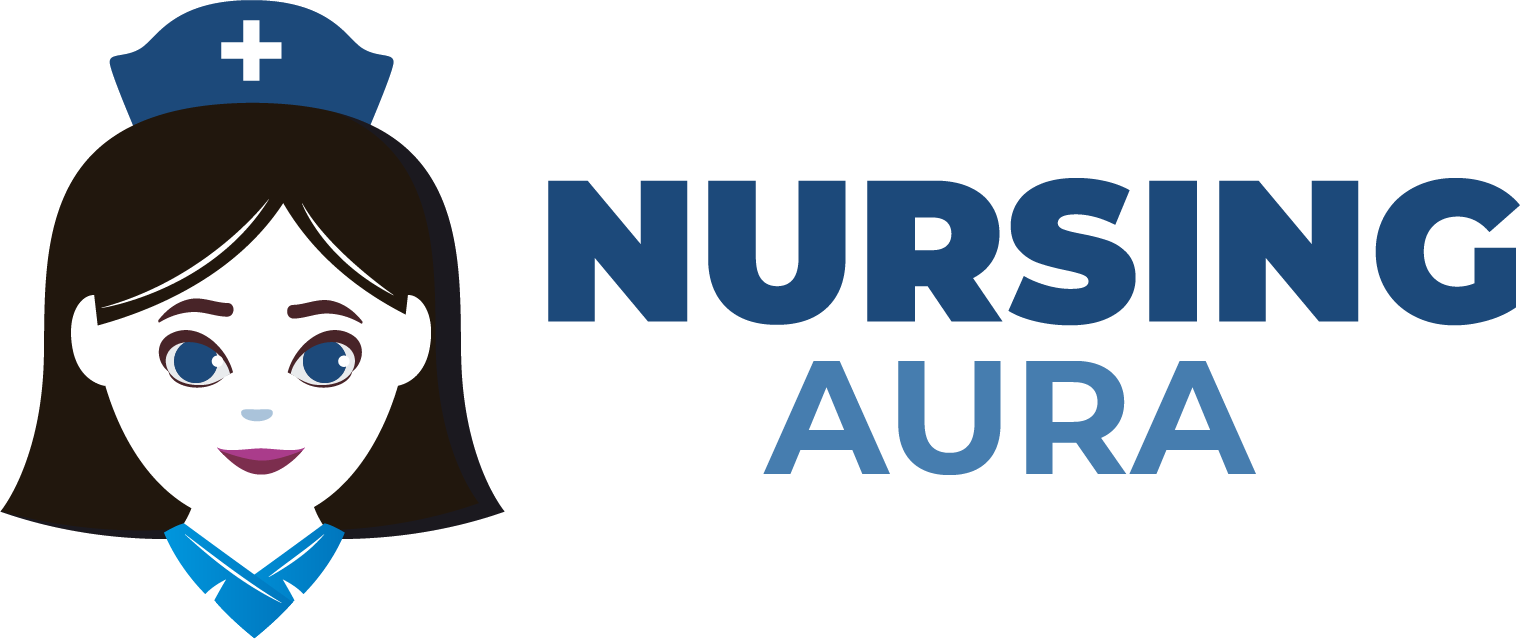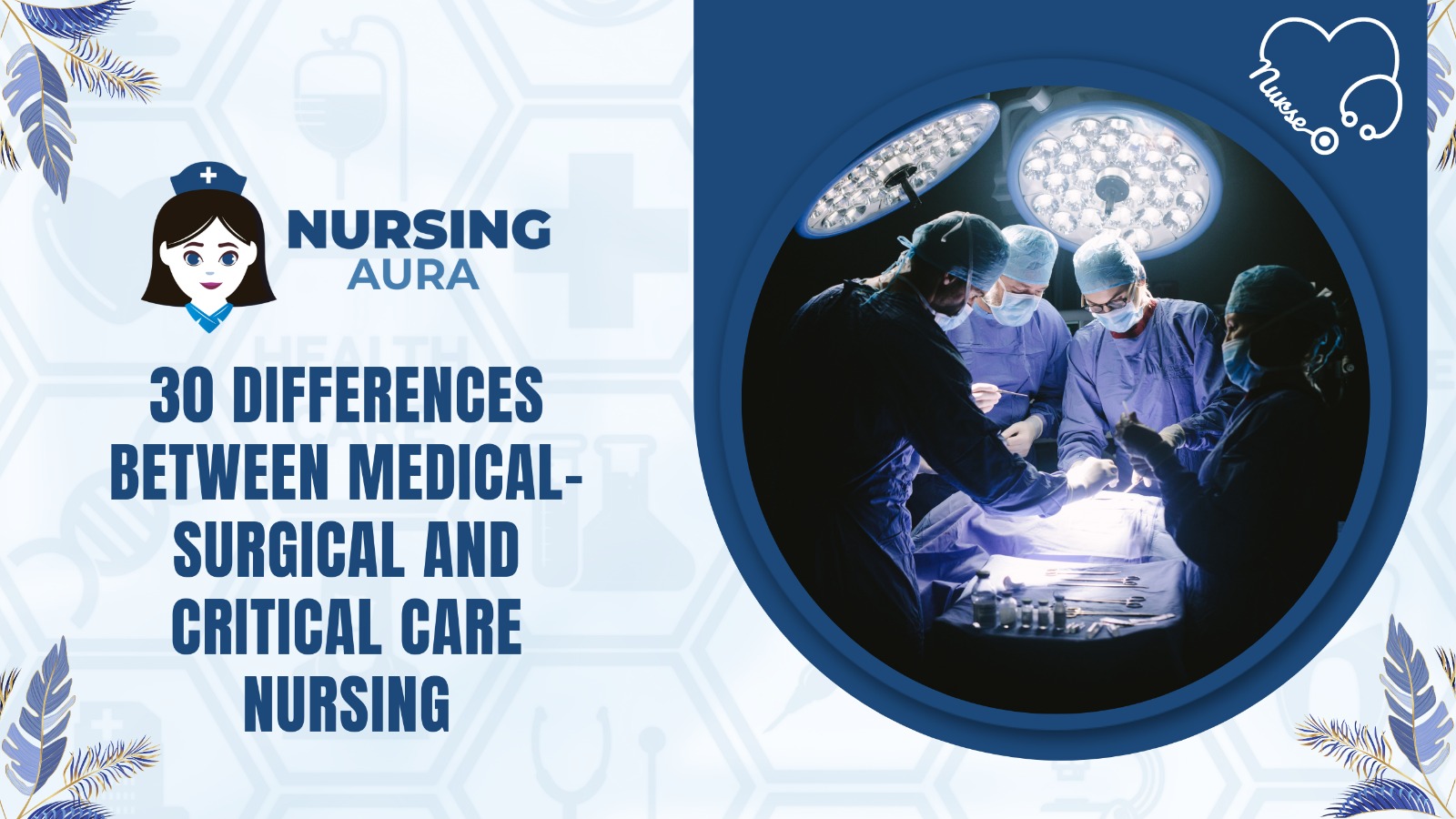Critical care and medical-surgical nursing are related nursing specializations. Although both are vital to patient care, their jobs, duties, and patients vary greatly. Med-surg nursing treats patients who have had surgery or need non-specialized care. Med-Surg nurses work in hospitals, clinics, and long-term care. They examine and treat patients with diabetes, pneumonia, and other illnesses before and after surgery. Med-Surg nurses engage patients in patient education about their diseases and rehabilitation.
Critical care nursing treats patients with life-threatening diseases or injuries who need extensive monitoring and treatment. Hospitals employ critical care nurses in CCUs and ICUs. Patients on ventilators, cardiac monitoring, or organ failure are cared for by them. Critical care nurses can quickly respond to changes in a patient’s health and deliver sophisticated therapies such as life-saving drugs. These specializations also have different patient groups. Patients in med-surg nursing are more stable and have more medical issues. Critical care nurses treat critically ill patients who need continual care.
In addition, the nurse-patient ratio differs greatly amongst specializations. Nurses in medical-surgical units care for more patients than critical care nurses due to the degree of treatment. Critical care nurses need sophisticated life support, hemodynamic monitoring, and medical device data interpretation abilities. Despite their expertise, med-surg nurses may not need critical care training.
Medical-surgical nursing and critical care nursing are different disciplines with their own responsibilities and focus. Critical care nurses treat critically sick patients with complicated demands, whereas medical-surgical nurses treat a variety of medical ailments. The healthcare system relies on both specializations to keep patients healthy along the continuum.
| S.No. | Aspects | Medical-Surgical Nursing | Critical Care Nursing |
| 1 | Patient Population | General medical and surgical patients | Patients with life-threatening conditions |
| 2 | Setting | Work in medical-surgical units or general hospital floors | Work in intensive care units (ICUs) or critical care units (CCUs) |
| 3 | Patient Acuity | Treat patients with a wide range of acuity levels | Care for patients with high acuity and complex needs |
| 4 | Type of Care | Provide acute and postoperative care | Provide highly specialized, intensive care |
| 5 | Focus of Care | Emphasize recovery and rehabilitation | Emphasize stabilization and life-saving interventions |
| 6 | Shift Duration | Typically work standard 8- or 12-hour shifts | May work longer shifts, including 12-hour or 24-hour shifts |
| 7 | Patient Load | May have a higher patient-to-nurse ratio | Usually have a lower patient-to-nurse ratio |
| 8 | Continuous Monitoring | Monitor patients, but not as intensively as in critical care | Continuously monitor patients’ vital signs and conditions |
| 9 | Multidisciplinary Team | Collaborate with various healthcare professionals | Work closely with a highly specialized medical team |
| 10 | Equipment | Use basic medical equipment and monitors | Use advanced life support equipment and technology |
| 11 | Procedures | Perform routine procedures and administer medications | Perform advanced procedures, such as ventilator management |
| 12 | Skillset | Comprehensive nursing skills with a broad knowledge base | Specialized critical care skills and knowledge |
| 13 | Education | General nursing education with additional training in medical-surgical care | Specialized training in critical care nursing |
| 14 | Scope of Practice | Cover a wide range of medical conditions and surgical procedures | Focus on critical illness, trauma, and post-operative care |
| 15 | Rapid Response | Handle routine emergencies within the unit | Respond to rapid changes in patient condition |
| 16 | Diverse Diagnoses | Encounter diverse medical diagnoses | Focus on critical medical conditions and interventions |
| 17 | Patient Flow | Patients may have shorter stays in the unit | Patients often have longer and more complex hospital stays |
| 18 | Family Involvement | Involve families in care but with less intensity | Often provide emotional support to families in crisis |
| 19 | End-of-Life Care | May encounter end-of-life care but less frequently | Frequently involved in end-of-life and palliative care |
| 20 | Decision-Making | Generally make decisions within standard protocols | Make rapid, critical decisions with significant autonomy |
| 21 | Training and Certifications | May hold medical-surgical nursing certification | Often hold certifications in critical care (e.g., CCRN) |
| 22 | Stress Levels | May experience high stress but less intensity | Experience high levels of stress due to critical situations |
| 23 | Shift Work | Work regular shifts with occasional overtime | May work irregular hours, including nights and weekends |
| 24 | Charting | Document patient care, changes, and treatments | Document extensive critical care interventions |
| 25 | Code Blue Response | May participate in Code Blue responses | Often lead or actively participate in Code Blue responses |
| 26 | Patient Education | Educate patients about postoperative care and recovery | Educate patients and families about critical conditions and treatments |
| 27 | Admissions/Discharges | May assist with patient admissions and discharges | Typically not involved in admissions or discharges |
| 28 | Medication Management | Administer medications and monitor their effects | Administer complex medications and titrate doses |
| 29 | Ventilator Management | Rarely involved in ventilator management | Frequently manage ventilators for critically ill patients |
| 30 | Interdisciplinary Rounds | May participate in rounds with the healthcare team | Participate in daily multidisciplinary rounds on patient care |
Frequently Asked Questions (FAQS)
1. What distinguishes medical-surgical nursing from critical care nursing?
The key differences are patient population and care level. Medical-surgical nursing treats patients who have had surgery or have non-specialized medical conditions, while critical care nursing treats patients with severe, life-threatening illnesses or injuries who need intensive monitoring and treatment in CCUs or ICUs.
2. Which patients do medical-surgical nurses treat?
Medical-surgical nurses treat patients with chronic diseases like diabetes and acute situations like pneumonia. They educate surgery patients about their problems and rehabilitation and give pre-and post-operative care.
3. What patients do critical care nurses treat?
Critical care Nurses focus on important patients with life-threatening diseases or injuries. Mechanical breathing, cardiac monitoring, and sophisticated therapies for organ failure, trauma, and serious infections may be needed for these individuals.
4. How does medical-surgical nursing vary from critical care nursing in the nurse-patient ratio?
Because critically ill patients require extensive and sophisticated care, critical care nurses have a lower nurse-patient ratio than medical-surgical nurses. This lets critical care nurses focus on each patient.
5.How does critical care nursing differ from medical-surgical nursing in training and skills?
Critical care nurses must be trained in advanced life support, hemodynamic monitoring, and medical device data interpretation. They are trained to respond quickly to patient changes and may need intubation and life-saving pharmaceutical knowledge. Medical-surgical nurses are proficient, yet they may not need critical care training.

